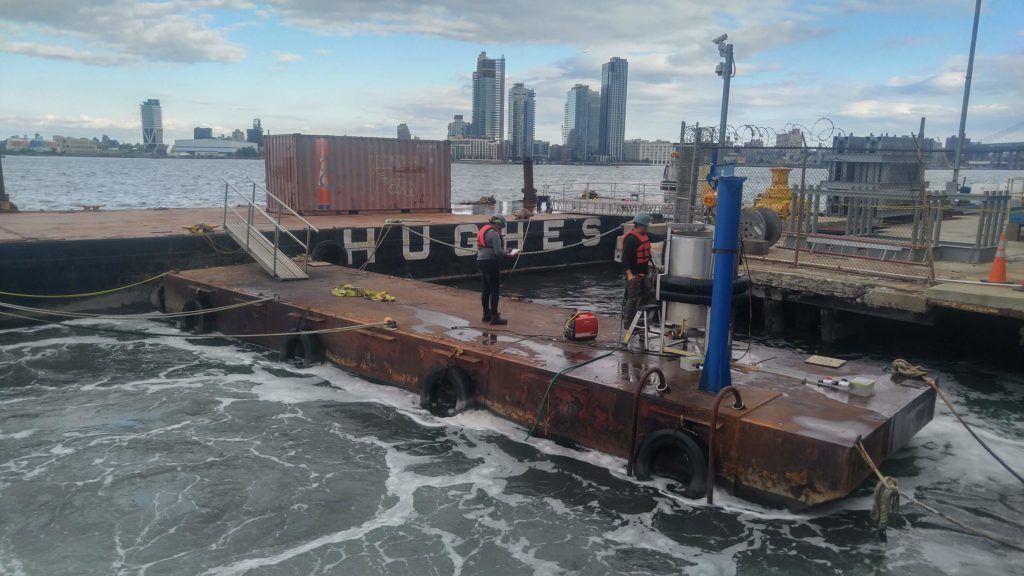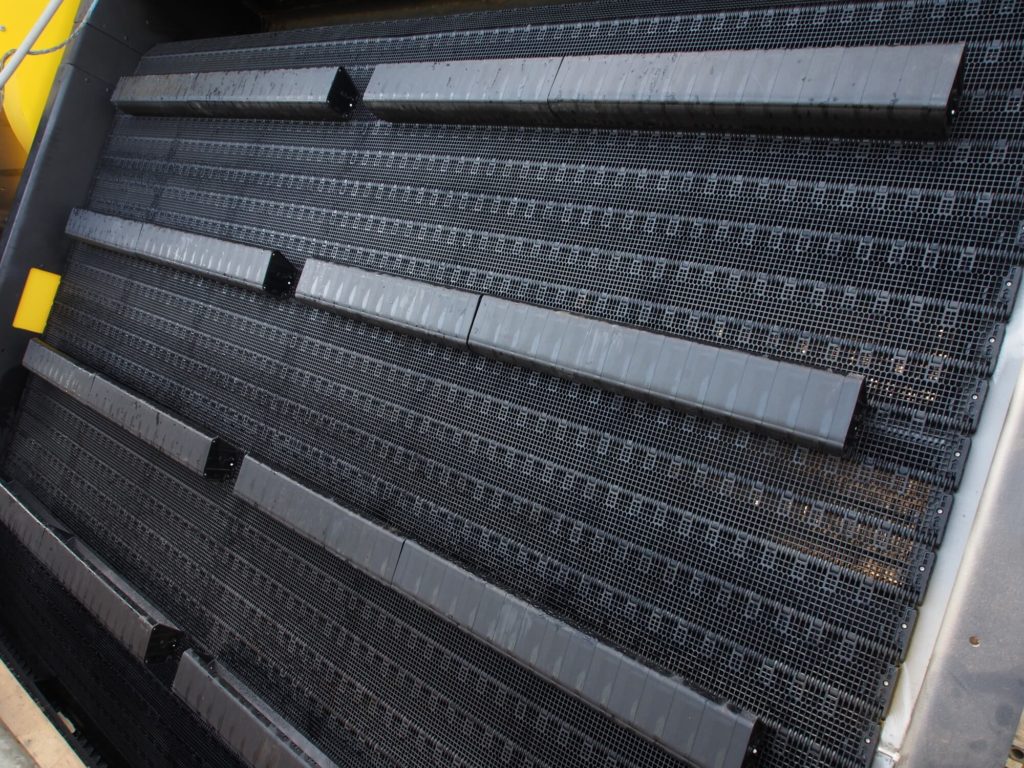EPRI, Utilities Collaborate on Numerous Initiatives to Protect Aquatic Life
In 2014, U.S. Environmental Protection Agency (EPA) issued its final 2014 rule to reduce mortality of aquatic life caused by cooling water intakes at power plants. Intakes can affect aquatic life by impingement, which occurs when large fish and shellfish get pinned against intake structures, and entrainment—when eggs and larvae are pulled into cooling systems and exposed to heat, physical stress, and chemicals.
The EPA rule requires plants to select and install an impingement reduction technology. Plants withdrawing water above a certain threshold must conduct additional studies to help state permitting authorities determine appropriate entrainment reduction technologies.
A primary question raised by this mandate: Which technologies are most effective in reducing impingement and entrainment?
“Research by EPRI and others indicates there is no single technology effective at protecting fish and other aquatic life at all power plants,” said EPRI Technical Executive Doug Dixon. “Priorities and needs vary by the type of water body, configuration and operation of intakes, and species and life stage of fish and shellfish.”
Recognizing these site-specific needs, the rule provides for flexibility in compliance. Selection and deployment of fish protection technologies are expected to occur between 2018 and 2025.
To inform its members, regulatory and resource agencies, and the public, EPRI’s fish protection program assesses the impacts of cooling water intakes on aquatic life and conducts R&D on numerous technologies to reduce impingement and entrainment. EPRI technical research informs power companies as they conduct site-specific impingement and entrainment studies, evaluate the effectiveness of fish protection technologies, and implement solutions at their facilities.
In serving the broader public interest, EPRI research improves the technical basis for regulatory, permitting, and operating decisions. It also considers industry imperatives to control costs, achieve environmental compliance, manage business risks, and provide affordable electricity.
Lowering Potential Costs by Billions
During its rulemaking, EPA considered requiring all existing power plants with once-through cooling systems to retrofit closed-cycle cooling systems. However, EPRI research found that the nationwide cost for such retrofits would approach $100 billion, potentially forcing many plants to close and causing adverse environmental impacts such as increased particulate emissions.
“We demonstrated that the national cost to society greatly exceeded the benefits,” said Dixon. “The final rule allows for site-specific determination of the best technology available for fish protection. Our R&D supports that determination.”
Traveling Screen Performance
To inform site-specific selections of the best technology available, EPRI has done extensive lab and field research on the performance of traveling water screens with fish-friendly modifications. Traveling screens are designed to prevent debris from blocking and reducing cooling water flow, which can cause a plant to reduce power output or go offline. They are also designed to stop debris from entering the cooling system and damaging equipment. In the 1970s, operators attempted to make the screens more fish-friendly by equipping them with fish-lifting buckets, gentle low-pressure sprays, and troughs to return organisms to the water source. In some cases, screens were modified with fine-mesh (less than 2 millimeters) screens to collect and return fish and shellfish eggs and larvae.
At Con Edison’s East River Generating Station in Manhattan, EPRI tested a system of traveling screens modified to filter fish, fish eggs, and larvae from the intake. The screens’ fine woven mesh was designed to be less abrasive to fish. Buckets on the screens collected fish, and continuous screen rotation facilitated rapid fish removal. The team found that eggs and larvae channeled through the cooling system and back into the river had higher survival rates compared with those that were removed by the screens.
Indeed, EPRI laboratory studies had previously demonstrated that survival of larvae on fine-mesh screens was generally poor. Preliminary results from similar ongoing studies at DTE Energy’s Monroe Generating Station on Lake Erie also indicate that eggs and larvae collected by screens had lower survival rates, confirming laboratory observations.
These findings could inform decisions by power plant operators to select screens with larger mesh that enables fragile early-stage organisms to pass through the cooling system and return to the water source. The effectiveness of this approach will depend on the attributes of each power plant and local aquatic species.

EPRI also partnered with Alabama Power to investigate the challenges involved with optimizing fish-friendly modified traveling screens. Plants that deploy screens for impingement reduction are required under the EPA rule to optimize them.
Alabama Power equipped two facilities (Barry Electric Generating Plant and Plant Gorgas) with different state-of-the-art screen systems to address site-specific debris concerns. In the two-year study, the team identified equipment needs, preliminary methods for collecting optimization data, and the challenges with respect to gathering sufficient data to evaluate various parameters (such as screen rotation speed and spray pressure). Later in 2018, EPRI expects to publish a report with the results, along with other results from screen studies in a laboratory flume, helping other utilities perform screen optimization studies.

Protecting Fish from Thermal Discharge
In addition to protecting aquatic life at intake structures, power plants are required to mitigate discharge impacts. Many power plant cooling systems discharge heated water (generally less than 15°F warmer than ambient temperature) into rivers and other water bodies, and it is believed that the resulting heated plumes have the potential to adversely impact aquatic species. Identifying the extent of these plumes is an important first step in understanding their biological effects.
Traditionally, plumes are measured by boat surveys or estimated by computer modeling. However, boat surveys present worker safety concerns, especially during inclement weather. As an alternative, EPRI is researching the use of air and aquatic drones to map plumes.
Protecting fish from a plant’s thermal discharge requires striking a fine balance. In some cases, plant operators must construct a costly, long return structure to help fish and other organisms avoid heated waters after entering an intake. At the same time, the longer the return structure, the greater the potential for injury or mortality and the greater the construction, operations, and maintenance costs.
To help operators assess the optimal return length and location, EPRI is considering field studies on thermal exposure effects. Researchers would tag fish and track how long they remain in the thermal plume and various temperature zones, comparing the results with those from similar laboratory tests.
Using Environmental DNA for Fish Protection
Tools to assess fish species composition and abundance can help utilities implement regulations. In 2018, EPRI will evaluate a new tool known as Environmental DNA (eDNA). To determine local biodiversity, researchers can collect and analyze DNA that fish and other organisms shed through blood, feces, mucous, and other tissues.
It’s expected that eDNA will complement conventional sampling methods, given such potential drawbacks as sample contamination and difficulties distinguishing live and dead organisms. EPRI plans to inform the industry on eDNA’s applications and limitations.
The Outlook for Fish Protection
Under the EPA rule, all plants must select and install impingement reduction technologies. These include fish protection–modified traveling water screens, barrier nets, and velocity caps. Evaluation of some plants may result in the installation and operation of entrainment reduction technologies. Examples include fine-mesh traveling screens, narrow slot wedge wire screens, and variable-frequency drives.
“Installing and operating these technologies between 2018 and 2025 will produce important and useful data on their performance, operations, and maintenance,” said Dixon. “EPRI is ready to assist in gathering this information, identifying R&D gaps, and implementing research to fill those gaps and advance fish protection.”
Monitoring Fish Populations in the Ohio River
Formed by 10 utilities in 1970, the Ohio River Ecological Research Program (ORERP) conducts fish, habitat, and water quality studies upstream and downstream of power plants. It’s the largest and longest running power plant ecological monitoring program in the world and has consistently demonstrated that Ohio River fish populations have not been adversely impacted by plant operations. EPRI has managed the program since 2002. Insights from the research have helped plants meet federal and state requirements and inform the public, federal and state agencies, and nongovernmental organizations. By using consistent monitoring methods and equipment over many years, the program has enabled the collection of reliable data.
It also has made fish population sampling for regulatory purposes more efficient. “During implementation of the EPA rule, we found that facilities located within a few miles of each other typically performed the same biweekly sampling,” said Tim Lohner, consulting environmental specialist at American Electric Power (AEP). “To streamline, we devised a plan in which each plant sampled less frequently, while ensuring that sampling was conducted at two or three facilities every week. Fewer samples were collected at each facility, but the overall assessment of Ohio River fish populations was more comprehensive.”
“Data from the Ohio River program’s collaborative studies, along with technology assessments and other analyses required by EPA, have resulted in a cost savings of up to $420,000 per facility,” said Lohner. “We have used the results to justify the validity of certain regulatory variances. They confirmed that thermal discharges are not adversely impacting aquatic life, eliminating the need for more stringent temperature restrictions and saving us approximately $155,000 to $230,000 per facility.”
Key EPRI Technical Experts:
Doug Dixon, Jon Black
For more information, contact techexpert@eprijournal.com.
Additional Resources:
- Fish Protection Technology Manual
- Potential Impacts of Closed-Cycle Cooling Retrofits at U.S. Power Plants
- Technical Brief on Reestablishing and Enhancing Freshwater Mollusk Populations through Reintroductions and Augmentations
- Survival of Ichthyoplankton Entrained or Excluded on Fine-Mesh Screens at East River Generating Station
Artwork by Craig Diskowski/Edge Design


